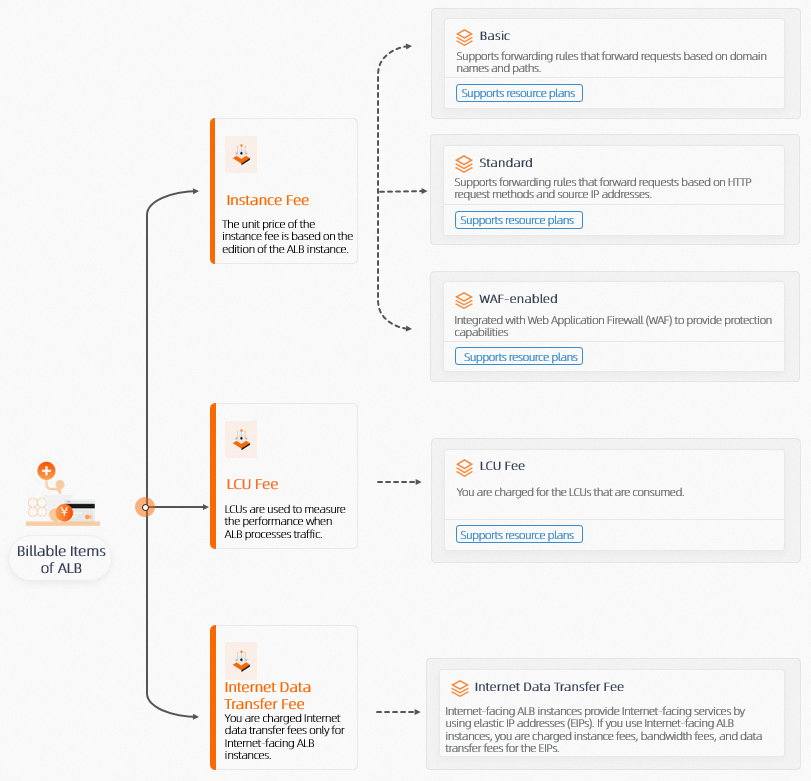This topic describes the billing methods, billable items, and billing rules for Application Load Balancer (ALB).
Billing methods
Application Load Balancer (ALB) supports the pay-as-you-go and subscription billing methods.
Pay-as-you-go: You are charged for the actual usage of each billable item. Fees are deducted after resources are consumed. This billing method is ideal for scenarios in which the usage of resources is difficult to predict.
Subscription (resource plans): You purchase resources in advance to offset fees. Resource plans are ideal for scenarios in which the usage of resources is easy to predict.
The subscription billing method is more cost-effective than the pay-as-you-go billing method.
Resource overages are billed based on the pay-as-you-go billing method and included in the bills. We recommend that you purchase resource plans based on the services that you need and the estimated amount of resource usage. For more information, see Purchase an ALB resource plan.
Billable items
The following figure shows the billable items of an ALB instance.
Billing cycle
ALB instances and Load Balancer Capacity Units (LCUs) are billed on an hourly basis based on resource usage. Bills are generated 1 hour after a billing cycle ends. The time when bills are generated is determined by the system.
You are charged Internet data transfer fees for the elastic IP addresses (EIPs) that are used by an Internet-facing ALB instance to access the Internet. The billing cycle, the time when fees are deducted, and the time when bills are generated are determined by the pay-as-you-go EIPs that are used by the ALB instance. For more information, see Billing cycle.
Pricing
For more information about the pricing of each billable item of ALB, see ALB billing rules and Introduction to ALB resource plans. The prices on the buy page shall prevail.
You can use the ALB LCU Calculator to estimate the number of LCUs consumed by your ALB service.